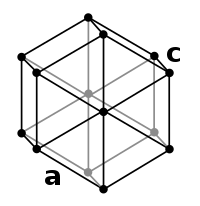
Photo from wikipedia
Abstract It is imperative to have an in-depth understanding of the relationship between oxygen consumption and gaseous product emissions during coal self-heating not only for preventing fires in the coal… Click to show full abstract
Abstract It is imperative to have an in-depth understanding of the relationship between oxygen consumption and gaseous product emissions during coal self-heating not only for preventing fires in the coal industry but also for reducing emissions of hazardous gases. Two typical coal samples with high tendency of spontaneous combustion were heated to 230 °C with a programmed temperature of 1.0 K min−1 using a pilot-scale test apparatus. The trends for oxygen consumption and gaseous product emissions were obtained from continuous measurements of the gas samples at the reactor outlet via a gas chromatography equipped with a Flame Photometric Detector. Based on the rates of oxygen consumption and gaseous product emissions, the relationship between oxygen consumption and each gaseous product emission was studied. Multi-linear regressions of the oxygen consumption and gaseous product emissions were performed. The coefficients for the emission rates of CO2, CO and H2 in the regression equations of the two coals with three different particle sizes are found to be all positive, while the coefficients for the CH4 emission rates are all negative. These results indicate that the oxygen consumption of coal facilitates the release of CO2, CO and H2, while the increase of oxygen consumption rate may not enhance the release of hydrocarbon gas. Based on the results, an evaluation index defined as the ratio of oxygen consumption rate to the gaseous product emission rate is proposed to assess the state of coal spontaneous combustion.
Journal Title: Fuel Processing Technology
Year Published: 2018
Link to full text (if available)
Share on Social Media: Sign Up to like & get
recommendations!